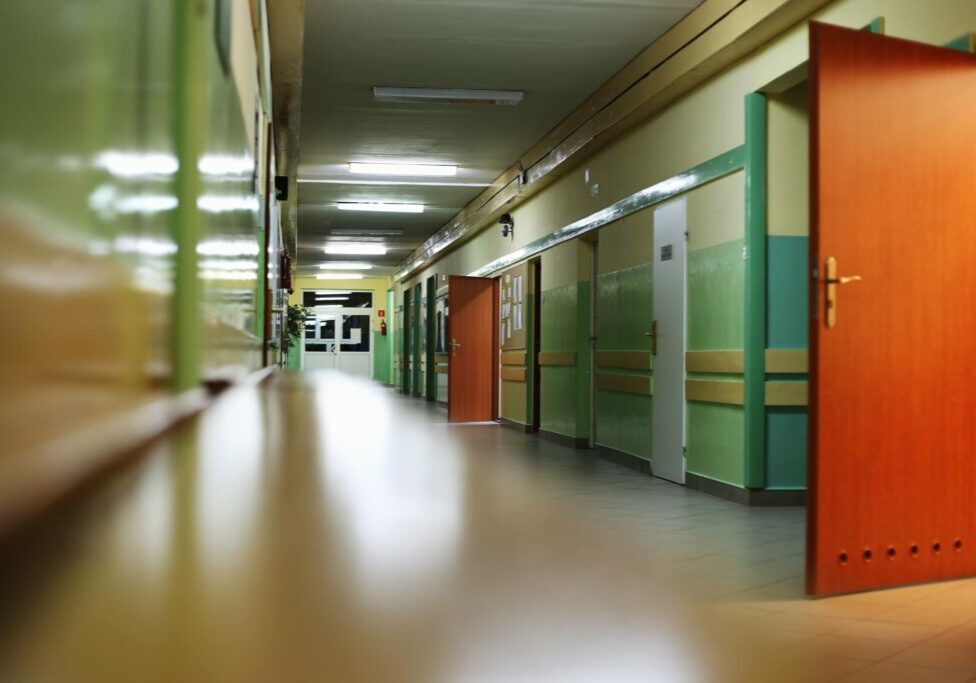Published in the June 2016 NJEA Review
by Adrienne Markowitz and Eileen Senn
While lead in school drinking water dominates the news, lead in paint must not be neglected. Staff and students can be exposed to lead from both water and paint, giving them a double dose of the toxic metal.
Last month, the NJEA Review covered in detail the hazards posed by lead in school drinking water. The same health problems occur from exposure to lead-based paint. Poisoning can be caused by just a microscopic bit of lead paint dust that is easily inhaled or accidently ingested. Staff and students can inadvertently expose their families, including the most vulnerable—pregnant and nursing women and children under age two—if lead dust travels home from school on shoes, clothing, backpacks or any exposed item.
Lead-based paint was banned from use in schools in 1978. However, it is still present on interior and exterior painted walls, ceilings, floors, doors, windows, woodwork, handrails, radiators, fences, roofing, gutters, downspouts, and playground equipment in virtually all schools built before 1978.
Lead-based paint must be properly maintained and managed. If it is blistering, chipping, peeling, cracking, or chalking from age, weather, or water damage, it can expose students and staff, especially custodial and maintenance workers, to lead’s harmful effects. Drilling, sanding, and sawing can disturb lead-based paint. Abatement of lead-based paint, which is designed to permanently remove it through replacement, encapsulation or removal, can create high exposures if not done with precautions such as physical isolation and negative air pressure, so that air flows into the isolated area, not out of it.
Local association action plan
Lead poisoning from paint is preventable if lead-safe policies and procedures are followed. Local associations should work with their UniServ field representatives to ensure that school districts do all of the following:
- Identify all lead-based paint, or assume that all painted surfaces contain it, in schools built before 1978.
- Use a state-licensed lead consultant that employs New Jersey-certified lead inspectors for lead inspection and testing.
- Develop a lead-based paint management plan so that staff members are aware of surfaces that should be handled with care.
- Provide staff with the support, tools and equipment they need to work in a lead-safe manner.
- Provide staff with lead-safe work practices training to safely perform renovation, repainting or maintenance projects that will disturb lead-based paint. The course must be given a state-approved training provider.
- Repair paint that is cracked, chipped, or peeling using lead-safe work practices.
- Prohibit tasks that create uncontrolled lead dust, chips or fumes. For example: dry sanding, heat-guns, dry scraping, or water blasting.
- Ensure proper containment and cleanup throughout the duration of the project.
- Prohibit access into containment areas by unauthorized persons.
- Protect surrounding soil from contamination if exterior work is being performed.
- Schedule major renovations and painting projects for summer months or other times when students and staff will not be present.
- Ensure proper cleanup takes place by performing lead-in-dust wipe sampling upon completion of projects.
- Never allow untrained staff or volunteers to perform any task that might disturb lead painted surfaces.
Districts must comply with multiple lead paint rules
Local associations have the law on their side when it comes to lead-based paint. Locals can have federal and New Jersey laws enforced if school districts don’t do the right thing. Note that lead-based paint abatement activities are regulated differently than renovation, repair and painting jobs, even though activities are similar. New Jersey regulations apply to inspection, risk assessment, project design and abatement activities. EPA regulations apply to renovation, repair and painting. Federal Occupational Safety and Health Administration regulations apply to both.
EPA Lead Renovation, Repair and Painting rules require contractors who are hired to perform renovation, repair and painting projects in homes, child care facilities, and schools built before 1978 that disturb lead-based paint to be Lead-Safe Certified and follow specific work practices to prevent lead contamination. If school employees conduct renovation, repair, or painting activities in a pre-1978 child-occupied facility, then the school itself must become certified. (Enforcement: EPA Region 2, 732-321-6671)
OSHA and PEOSH Lead in Construction Standard, 1926.62, requires safe practices in all construction, demolition, renovation and maintenance work where employees may be exposed to lead. It sets requirements related to the permissible level of worker exposure, exposure assessment, work practices, personal protective equipment including respirators, medical surveillance programs including blood testing, housekeeping, hygiene facilities and practices, signs, and recordkeeping. (Enforcement: PEOSH for public employees, 609-984-1863; OSHA for private sector employees, 800-321-6742, www.osha.gov/SLTC/lead)
Certification, licensing, training: All individuals who conduct lead abatement activities in NJ must be certified by the NJ Department of Health (DOH) and be employed by a firm licensed by the NJ Department of Community Affairs (DCA). (Enforcement: DCA Lead Hazard Abatement, 609-633-6224, https://bit.ly/leadhazardabatement)
Training agencies that wish to conduct NJ lead abatement training for workers and supervisors, inspector/risk assessors, and planner/project designers must be certified by the DOH. (Enforcement: DOH Occupational and Environmental Health Assessment Program, 609-826-4923, https://bit.ly/dohenvhealtassess)
Adrienne Markowitz holds a Master of Science degree in Industrial Hygiene from Hunter College, City University of New York. Eileen Senn holds a Master of Science degree in Occupational Health from Temple University in Philadelphia. They are consultants with the New Jersey Work Environment Council, which is a frequent partner with NJEA on school health and safety concerns.
